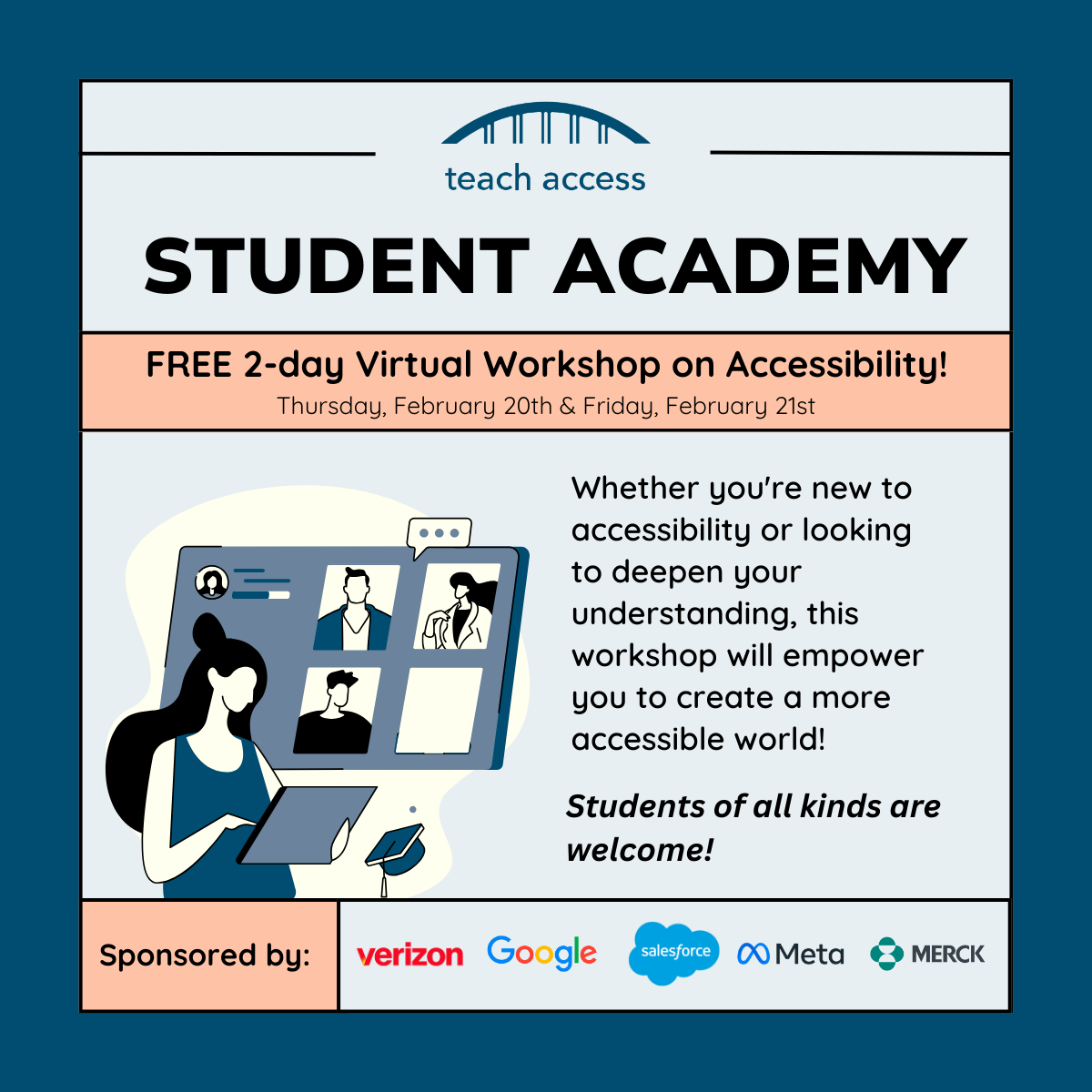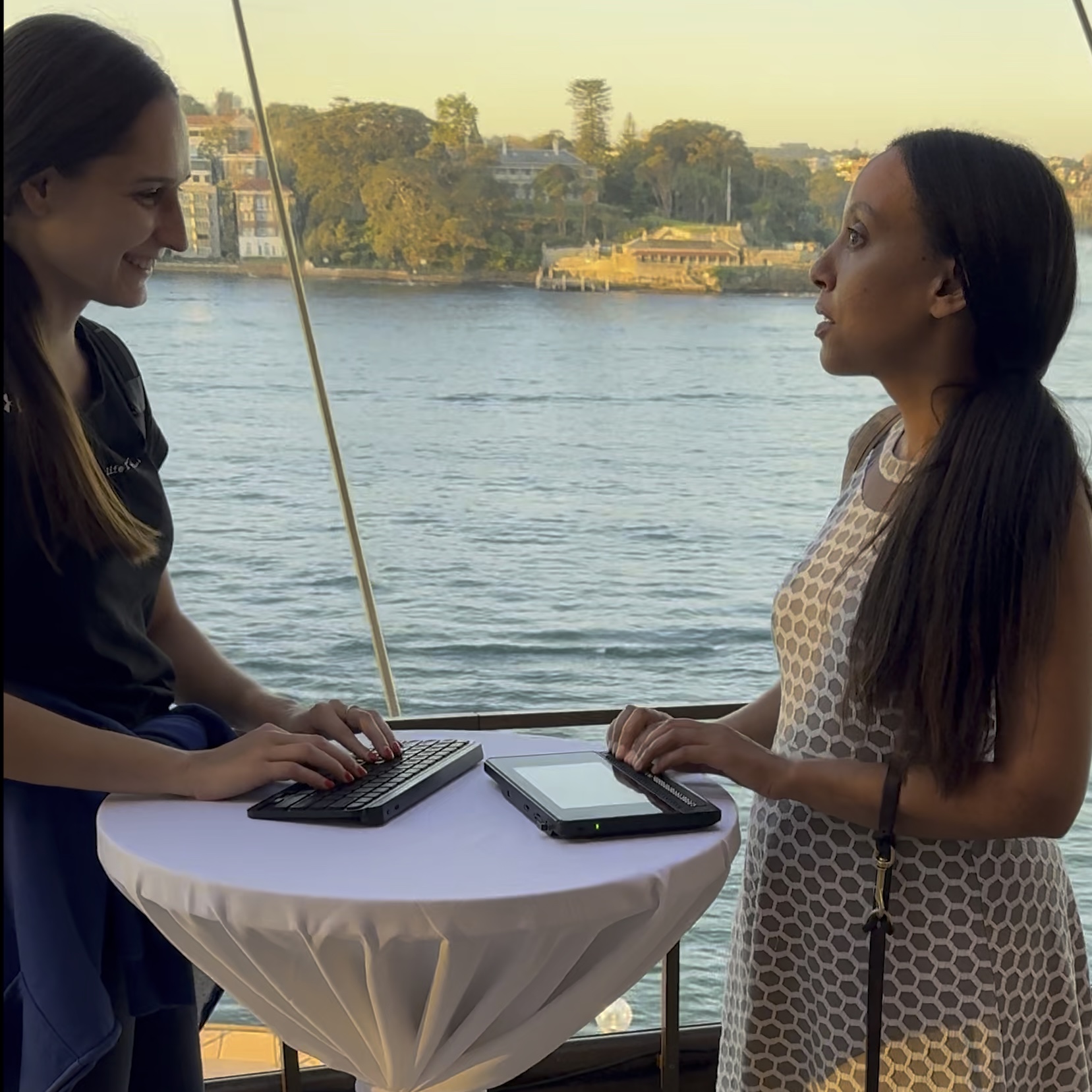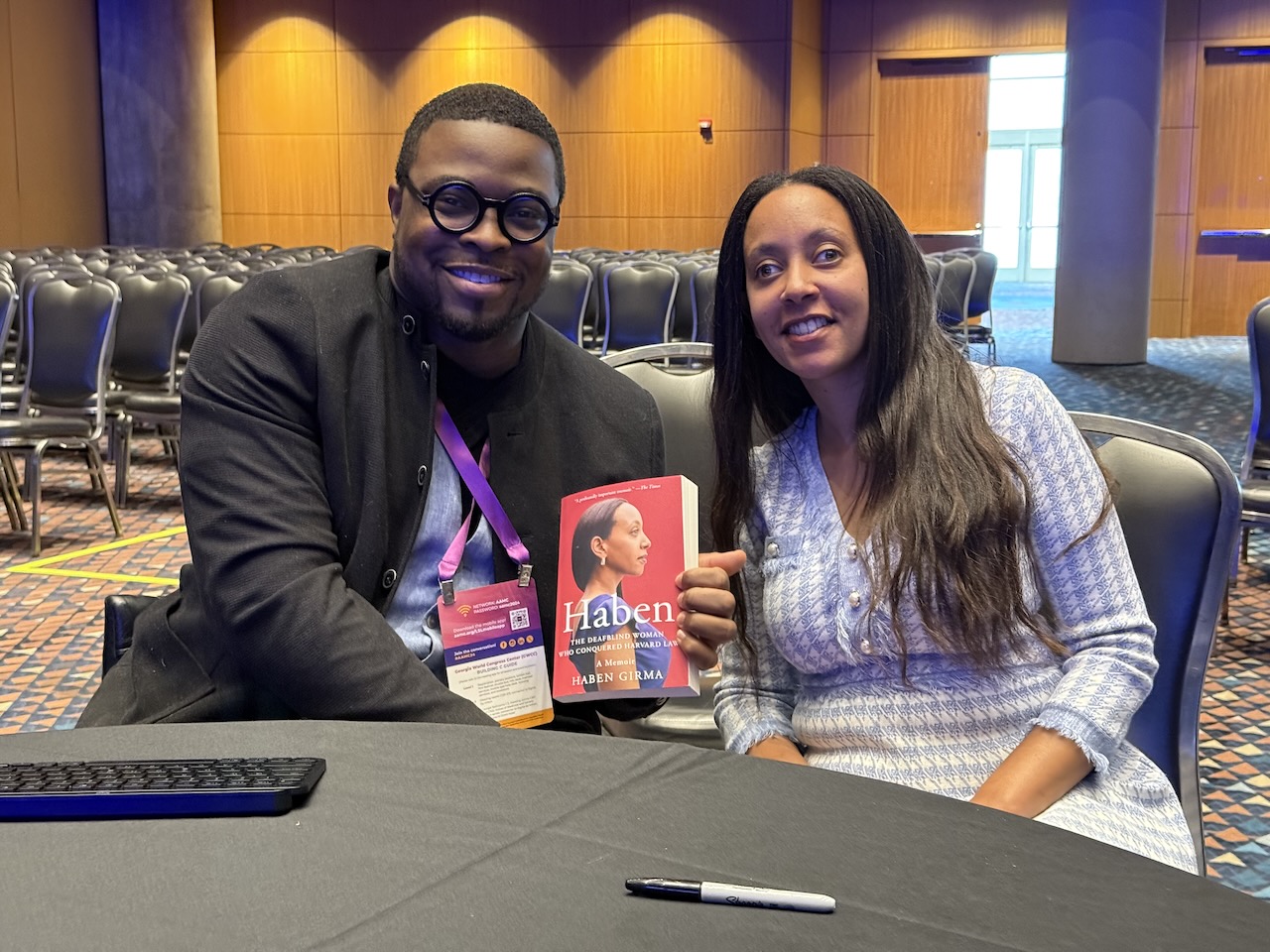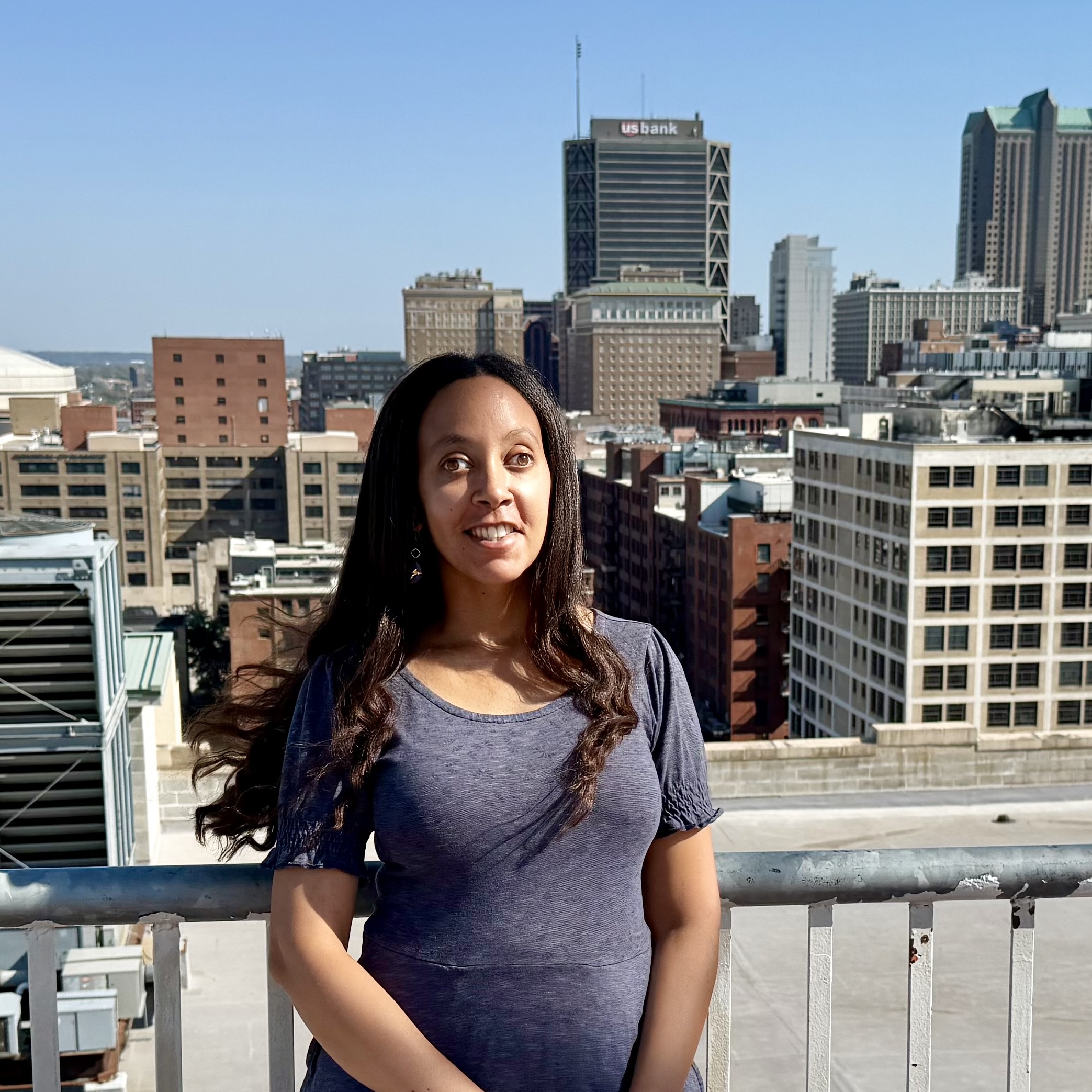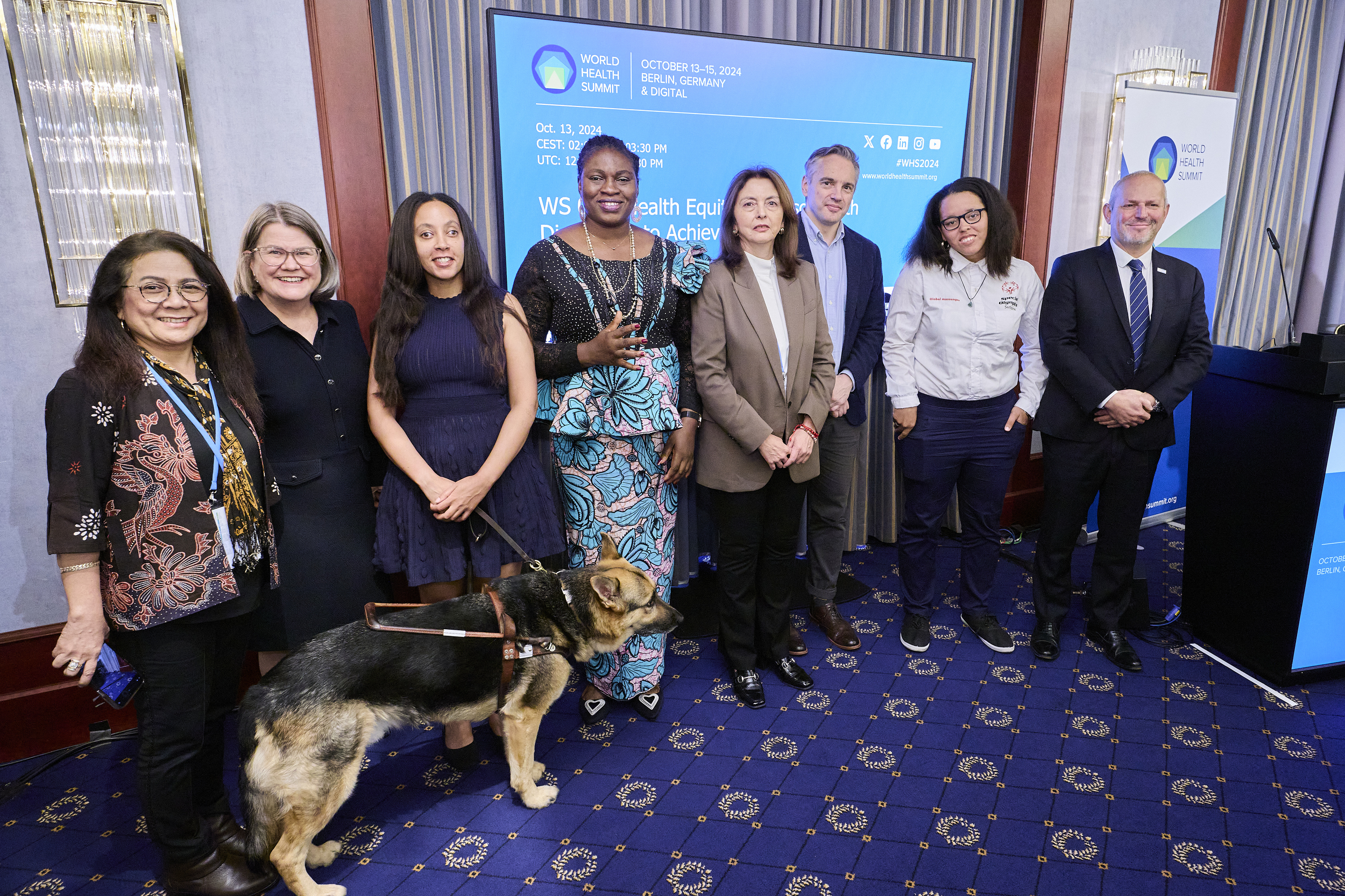Dreaming of a garden oasis? Allow me to share my experiences visiting the Garden for the Blind in Dublin, Ireland, and a sensory garden in Lund, Sweden. Each one teaches an accessibility feature communities can add to create beautiful, multisensory gardens.
Descriptive Transcript
Haben wears a short-sleeved navy blue dress, with her elbow resting on a smooth stone wall. Her hair and the vibrant green plants behind her sway gently in the wind.
Haben: This is the first time I’ve found Braille labels in a garden. And we have a metal plaque here with Braille: English, scientific name, and then the common name.
She turns to face the rock wall and places her hands on the metal plaque. A photo of the metal plaque appears on screen. Along the top is a row of Braille, and below that are the scientific and common names in large print.
Haben: And this one is… Rock Rose.
We cut back to the video of Haben facing the camera.
Haben: And the flowers are right behind me.
She gestures to a shrub with thin green leaves and small flowers with delicate pink petals surrounding a yellow center.
Haben: There are about 30 different plants with labels here. We are in St. Stephen’s Green in Dublin, Ireland.
The camera pans over a tall garden bed. Plaques line the top of the rock wall, each one with a different plant behind it. Beyond the garden stretches an expansive lawn enjoyed by many people. Some sit on the grass while others soak up the sun from the benches.
Haben: They call it the Garden for the Blind. But when I visited, there were about four people sitting on benches reading books with their eyes. When we design spaces for disabled people, oftentimes nondisabled people are enjoying them, too!
The scene changes to Haben standing in front of a black curtain wearing a sleeveless navy blue dress.
Haben: If you’re wondering, I did not ask the sighted people to leave the garden. I’m happy to have an accessible garden that’s shared with everyone! Blind people, sighted people… And a few weeks later, I actually found another garden with Braille.
She sits on the wooden frame of a raised garden bed full of small plants. She has Mylo’s leash in one hand and gestures with the other as she talks.
Haben: We found a sensory garden in Lund, Sweden. So there are labels with print and Braille. The print is also raised, so if you can’t read Braille, you can feel the print. And some of these are here because they have an amazing scent. Or in the case of one, an unpleasant scent. And then some of them are here because they have a really cool texture like lamb ears. The labels are in Braille and it’s Swedish Braille. But sometimes you can kind of guess, even if you’re not a Swedish speaker, what’s happening here. So I’m going to read one of these.
She reaches out to a small sign attached to a stick partially submerged in the dirt beside a plant.
Haben: So the label is C-H-O-K-L-A-D M-Y-N-T-A. Chokladmynta? Chocolate mint!
She stands in front of the black curtain, speaking to the camera.
Haben: I want to point out a few differences. The Irish garden had higher garden beds. And that means someone doesn’t have to bend down as much to reach out, to reach the plants or read the sign.
The video shows the tall Irish garden beds with metal plaques secured to the stone walls. The garden beds are about four feet tall.
Haben: But it also means it’s going to be more challenging for people who are shorter, use wheelchairs, or kids. Whereas the Swedish garden also has raised planters, but it’s lower down.
The camera sweeps over one of the Swedish garden beds, showing the low wooden borders, small plants, and their signs that stick up from the soil. The beds are about two feet tall.
Haben: So you’re not completely down on the ground. But it’s at a point where if you’re lower down because you’re a little kid or you’re coming by on a wheelchair, you still are able to reach over and touch a plant or read the Braille sign.
She speaks from the room with the black curtain.
Haben: Another difference is that the signage in the Irish garden is metal, and that’s more durable.
The image of the metal Rock Rose sign appears on screen. It’s followed by a zoomed-in video of Haben’s hand resting on the sign, ready to read.
Haben: So when I was reading the signs, all the dots were there. But in Sweden, some of the dots were missing. I know the Swedish winters are really tough, especially on gardens and on Braille signs. So if you’re not using something as durable as metal, you have to maintain the signs regularly or switch over to something that’s more durable.
She smiles.
Haben: I love traveling because I get to see… or FEEL the different strategies people use all over the world!
